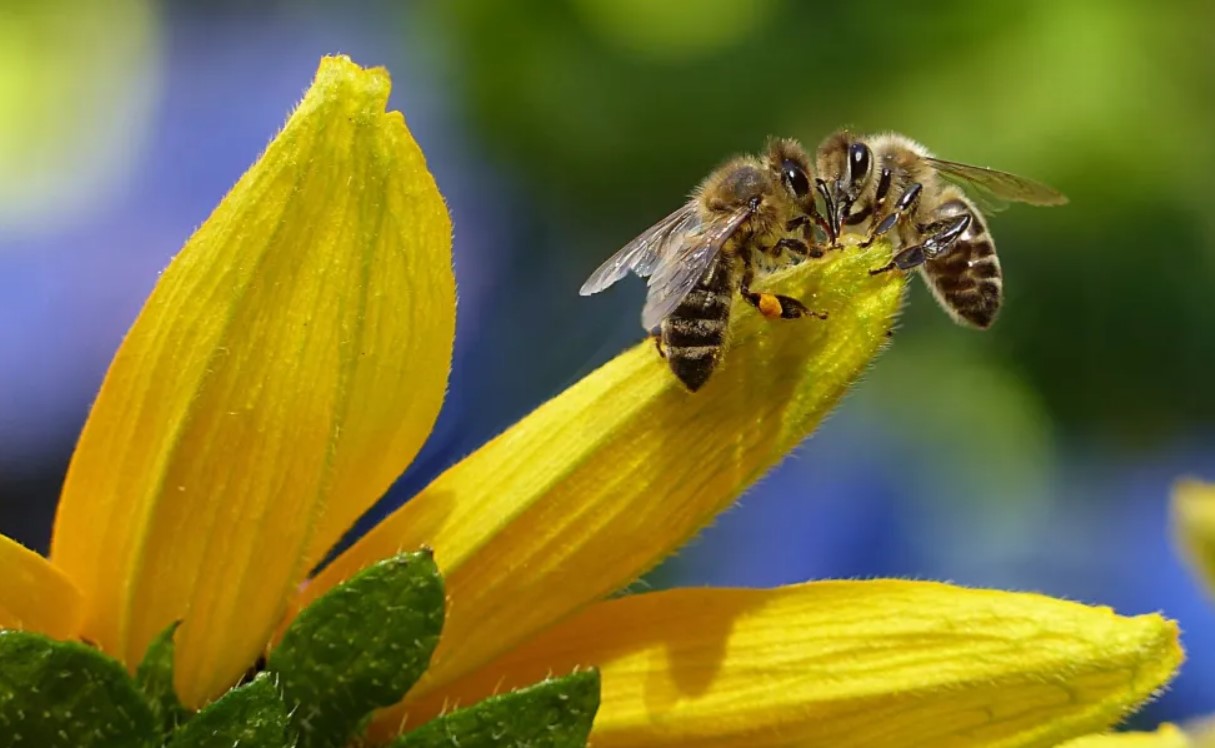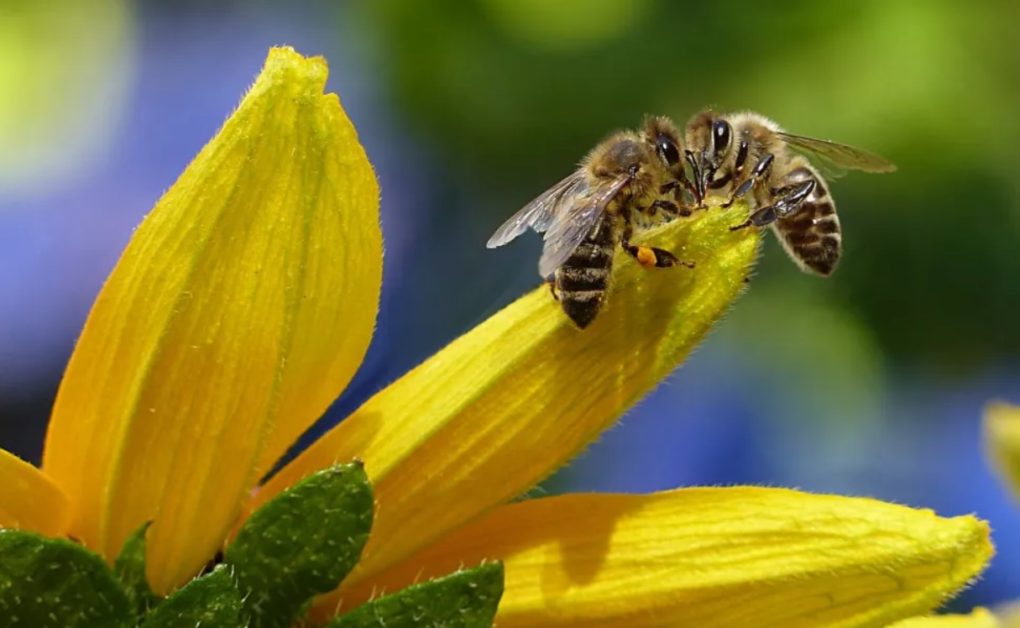Modern Pesticides Leaving Bees’ Brains “buzzed,” Threatening Their Ability to Pollinate
 By Study Finds
By Study Finds
Modern pesticides are leaving bees’ brains “buzzed” warns new research. They damage the vital pollinators’ brains so that they can’t walk in a straight line, say scientists.
Exposure to neonicotinoids, the worlds’ most commonly used insecticide, and new generation sulfoximine harms coordination. It’s similar to when drunk motorists struggle to step back and forth after being stopped by police. An insect version of the challenge shows for the first time how pesticides affect the nervous system of bees in a similar way.
“Here we show commonly used insecticides like sulfoxaflor and the neonicotinoid imidacloprid can profoundly impair the visually guided behavior of honeybees,” explains lead author Dr. Rachel Parkinson, of the University of Oxford, in a statement. “Our results are reason for concern because the ability of bees to respond appropriately to visual information is crucial for their flight and navigation, and thus their survival.”
Experts warn that bee populations are declining. Beekeepers have been reporting significant losses in honey bee colonies since the early 2000s. If current trends continue, certain species will be lost altogether. The World Health Organization has already warned of large-scale adverse effects on bees and other pollinators from pesticides.

The bee’s optomotor response is tested by showing videos of horizontally moving vertical bars to her on two screens, creating the illusion of optic flow. (Credit: RH Parkinson, C Fecher, and JR Gray)
Insects have an innate “optomotor response.” It lets them orient themselves back onto a straight trajectory when they threaten to steer off-course while walking or flying. A diminished optomotor response could lower their ability to forage, explains Dr Parkinson.
Scientists tested walking honey bees faced with videos of vertical bars that moved from left to right, or vice versa, across two screens. It “tricks” the bee into assuming that she has suddenly been blown off-course and needs to perform a corrective turn to return to a straight path. A healthy optomotor response will then instruct the bee’s motor system to orient back to an illusory straight line midway between the optic flow from right and left.
The researchers compared the efficiency of the optomotor response between four groups of 22 to 28 wild honey bees. They had all been allowed to drink unlimited amounts of a sucrose solution over five days. It contained either pure or contaminated with 50 ppb (parts per billion) imidacloprid, 50 ppb sulfoxaflor, or 25 ppb imidacloprid and 25 ppb sulfoxaflor simultaneously.
E-Course: Bio-Intensive Gardening
All bees were not as good at responding to the simulated optic flow when the bars were seemingly far away by being narrow or moving slowly. This was compared to when they were made to look close by by being wide or fast moving. But for any width and speed, the bees that had ingested the pesticides performed poorly compared to controls.
For example, they turned quickly in one direction only and didn’t respond to changes in the direction of movement of the bars, or showed a lack of turning responses. The asymmetry between left and right turns was at least 2.4 times greater for pesticide-exposed bees. Molecular analysis also showed pesticide-exposed bees tended to have elevated proportion of dead cells in parts of the brain’s optic lobes, important for processing visual input.
Likewise, key genes for detoxification were dysregulated after exposure. But these changes were relatively weak and highly variable across bees, and unlikely to be the sole explanation for the observed strong impairment of the optomotor response.
“Neonicotinoid and sulfoximine insecticides activate neurons in the insect brain and are not always recycled fast enough to prevent toxicity. The effects we observed could be due to a type of rewiring in the brain: to prevent neural damage by reducing the sensitivity of neurons to these compounds,” says Parkinson. “To fully understand the risk of these insecticides to bees, we need to explore whether the effects we observed in walking bees occur in freely flying bees as well. The major concern is that – if bees are unable to overcome any impairment while flying – there could be profound negative effects on their ability to forage, navigate, and pollinate wildflowers and crops.”
A recent scientific review of insect numbers around the world suggested that 40% of species are undergoing “dramatic rates of decline”. Bees, ants and beetles are disappearing eight times faster than mammals, birds or reptiles.
The findings are published in the journal Frontiers in Insect Science. Last year, a Bristol University study found pesticides are keeping bees awake at night by disrupting their circadian rhythms.
South West News Service writer Mark Waghorn contributed to this report.



